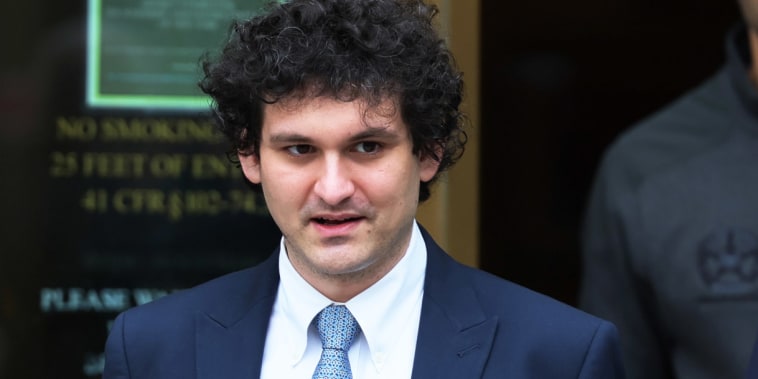Cybercrime is a growing concern, and it’s estimated that cyber criminals cost businesses US$10.3 billion in 2022. The top cybersecurity companies are working to mitigate those expenses.
The list from eSecurity Planet features 20 privately held and publicly traded companies, as well as 22 honorable mentions across a range of stock exchanges. The firm employed criteria such as user reviews, product features and benefits, analyst reports, independent security tests and use cases to evaluate companies in the cybersecurity sector.
The cybersecurity companies shown below are all listed on the NASDAQ and NYSE, and had market caps of less than US$400 billion at the time of publication. Data was current as of market close on October 16, 2023.
1. Broadcom (NASDAQ:AVGO)
Market cap: US$371.93 billion; current share price: US$901.13
The first cybersecurity company on this list is global technology firm Broadcom, which has built a large portfolio of embedded and mainframe security solutions, as well as payment authentication software. The company broadened its offerings in November 2019 with the acquisition of cybersecurity firm Symantec and now offers a suite of integrated Symantec cybersecurity software.
2. Cisco Systems (NASDAQ:CSCO)
Market cap: US$220.81 billion; current share price: US$54.46
For a number of years now, Cisco Systems has increasingly invested in boosting its cybersecurity services. Today, the company offers an array of products for cloud security, endpoint security and security analytics. To address the cybersecurity skills shortage, Cisco offers certification programs for IT professionals.
3. IBM (NYSE:IBM)
Market cap: US$126.82 billion; current share price: US$139.21
IBM’s security division offers customers an advanced and integrated portfolio of enterprise security products and services. IBM X-Force helps businesses and organizations integrate security solutions into their everyday functions and provides help with risk assessment, incident detection and threat response. Like Cisco, IBM also offers cybersecurity certification programs.
4. Palo Alto Networks (NASDAQ:PANW)
Market cap: US$81.41 billion; current share price: US$263.79
Palo Alto Networks bills itself as “the global cybersecurity leader.” The company’s security portfolio includes advanced firewalls and cloud-based offerings that protect more than 85,000 organizations across their clouds, networks and mobile devices.
5. Fortinet (NASDAQ:FTNT)
Market cap: US$46.43 billion; current share price: US$59.10
Fortinet provides end-to-end cybersecurity infrastructure products and services, such as firewalls, antivirus tools, intrusion prevention and endpoint security. The company’s cybersecurity platform can address critical security challenges and can protect data across digital infrastructure systems, whether in networked, application, multi-cloud or edge environments.
6. CrowdStrike Holdings (NASDAQ:CRWD)
Market cap: US$44.84 billion; current share price: US$187.79
CrowdStrike Holdings is a software-as-a-service solutions provider. This team of cybersecurity professionals uses advanced endpoint detection and response applications and techniques in its machine-learning-powered antivirus protection offerings to ensure breaches are stopped before they occur.
7. Zscaler (NASDAQ:ZS)
Market cap: US$25.36 billion; current share price: US$172.31
Cloud security company Zscaler’s Zero Trust Exchange platform can be used to secure user-to-app, app-to-app and machine-to-machine communications over any network. The company also offers cloud migrating services.
In 2021, Zscaler won Microsoft’s (NASDAQ:MSFT) Zero Trust Champion of the Year award. The company is also known for setting the standard in the field of security service edge, and it claims the Zero Trust Exchange is the world’s most-used security service edge platform.
8. Check Point Software (NASDAQ:CHKP)
Market cap: US$15.96 billion; current share price: US$136.44
Check Point Software is part of the unified threat management sector, and it offers numerous products to protect users on mobile, networks and the cloud. It also provides users with various security management services to prevent future cyber attacks and data breaches. In 2021, Check Point acquired Avanan, a cloud email and collaboration security company.
9. Okta (NASDAQ:OKTA)
Market cap: US$13.46 billion; current share price: US$85.45
Okta is an identity and access management company that provides cloud software solutions for managing and securing user authentication, as well as building identity controls into applications, website services and devices.
10. Tenable (NASDAQ:TENB)
Market cap: US$5.13 billion; current share price: US$44.31
Tenable’s exposure management platform integrates risk-based vulnerability management, web application security, cloud security and identity security. The platform uses context-driven analytics to help understand and reduce cybersecurity threats. The company’s clients include more than 40,000 organizations globally.
FAQs for cybersecurity
Is cybersecurity a growing industry?
Cybersecurity is a growing industry — according to Statista, it has a projected CAGR of 9.63 percent between 2023 and 2028, which will allow it to reach a market value of US$256.5 billion. The largest segment within the cybersecurity market is security services, while cloud security is forecast to experience the fastest growth.
What are the current trends in cybersecurity?
Today’s top trends in cybersecurity include improvements in preventing and mitigating attacks against cloud services, growth in internet of things devices, the integration of artificial intelligence and machine learning, multi-factor identification and the increasing threat of deepfakes. Cybersecurity companies addressing these current issues in the market may have an advantage in attracting investor attention.
Which cybersecurity stocks pay dividends?
Very few cybersecurity stocks pay dividends; however, Cisco Systems and Juniper Networks (NYSE:JNPR) are two companies that offer dividend payments to their shareholders. Both pay quarterly dividends, with Cisco sporting an annual dividend yield of 3 percent, while Juniper Networks comes in at 2.71 percent. The average annual dividend yield for companies in the overall technology sector is 3.2 percent.
Securities Disclosure: I, Melissa Pistilli, hold no direct investment interest in any company mentioned in this article.








